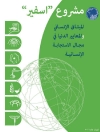लेखक के बारे में
Frederick E. Grine
Fred Grine is Professor of Anthropology and of Anatomical Sciences at Stony Brook University. He has published over 100 articles in scientific ...
लेखक के बारे में
Frederick E. Grine
Fred Grine is Professor of Anthropology and of Anatomical Sciences at Stony Brook University. He has published over 100 articles in scientific journals dealing with the subject of human evolution, and his work on the Late Pleistocene human fossil from Hofmeyr, South Africa, was named by Time Magazine as one of the top ten science stories of 2007. He edited Evolutionary History of the ‘Robust’ Australopithecines (1988, Aldine de Gruyter), and is author of Regional Human Anatomy: a Laboratory Workbook (2002, 2005, 2007, Mc Graw-Hill).
John G. Fleagle
John Fleagle is Distinguished Professor of Anatomical Sciences at Stony Brook University. He has conducted paleontological field work in many parts of the world, including Argentina, Egypt, Kenya, Ethiopia and India. He is the author of the textbook Primate Adaptation and Evolution (1988, 1999, Elsevier), co-editor of the Human Evolution Sourcebook (1993, 2006, Prentice Hall), and editor of the journal Evolutionary Anthropology.
Richard E. Leakey
Richard Leakey is Professor of Anthropology at Stony Brook University and former Director of the Kenya National Museums and the Kenya Wildlife Service. His field work around Lake Turkana, Kenya, has yielded a treasure trove of hominin fossils that has provided much of the paleontological record on which our understanding of human evolution is based. He has authored a number of books, including Origins, and most recently, The Sixth Extinction: Patterns of Life and The Future of Humankind. He is Chairman of the Board of the Turkana Basin Institute at Stony Brook University.












